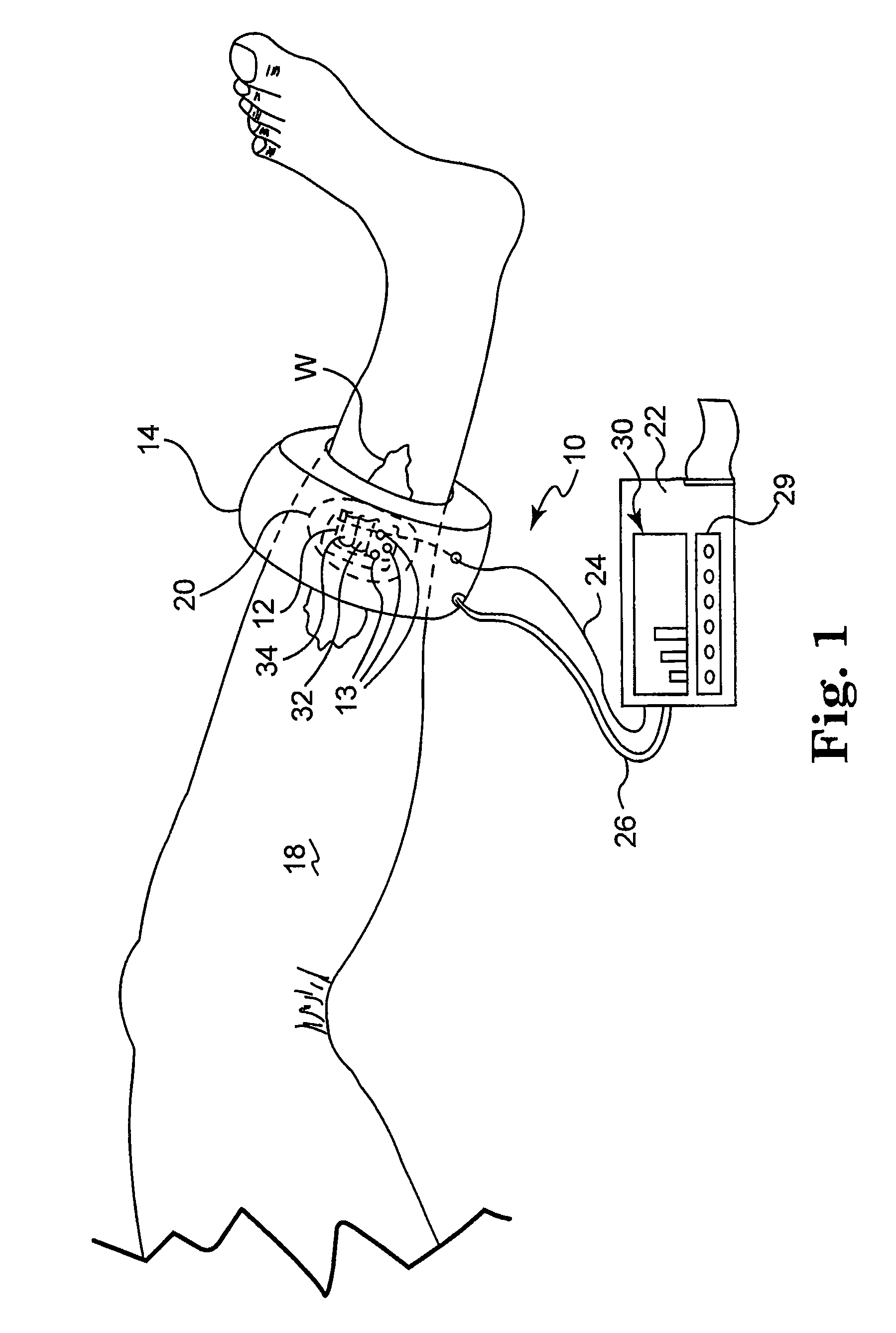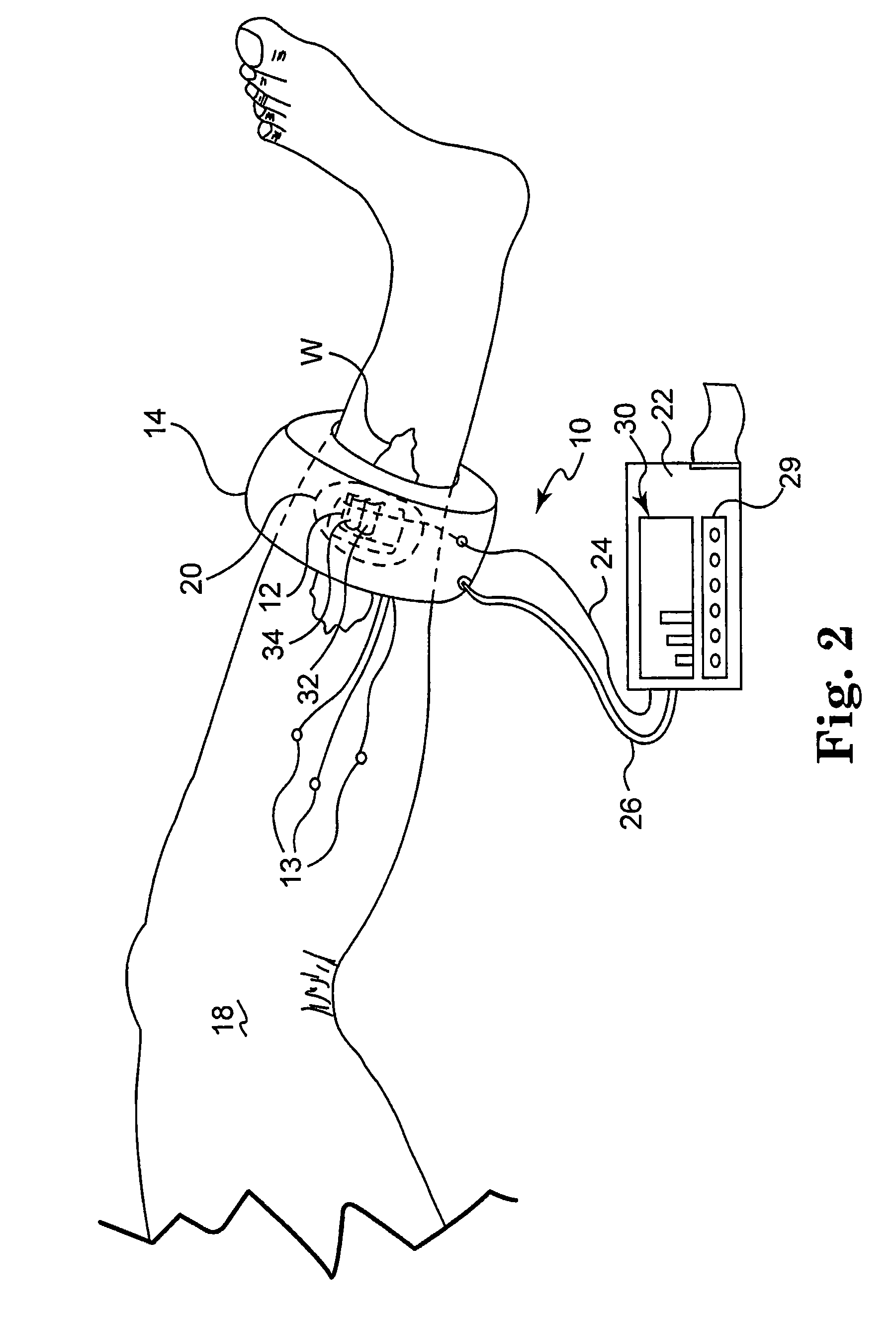System and method for assessing capillary vitality
a capillary vitality and system technology, applied in the field of system and method for assessing capillary vitality, can solve the problems of skewing the predictive value, abounding use of this conventional device, and the presence of oxygen is not necessarily a predictor of a tissue's ability to heal, so as to accurately and reliably predict the ability of a tissue to heal, the effect of low blood flow
- Summary
- Abstract
- Description
- Claims
- Application Information
AI Technical Summary
Benefits of technology
Problems solved by technology
Method used
Image
Examples
Embodiment Construction
[0026]The present invention is based on the inventors' discovery that the measurement of metabolic factors such as the presence or absence of tissue gases alone, for example oxygen and carbon dioxide, or the measurement of mechanical factors alone, such as blood flow, is not necessarily indicative of capillary vitality in both high and low blood flow states at local and / or regional tissue sites. Rather, the inventors' have found that the ability of capillaries to open and allow the transport of gases in the presence of challenge is a superior indicator of wound healing potential. Thus, the present invention is directed to the measurement of both mechanical and metabolic factors to assess and monitor capillary vitality. This combination of measurements as a predictor of capillary vitality yields more than just predictable results to a physician.
[0027]Capillary vitality is defined as the sum of capillary opening pressure (a mechanical parameter) and the metabolism of gases in native c...
PUM
 Login to View More
Login to View More Abstract
Description
Claims
Application Information
 Login to View More
Login to View More - R&D
- Intellectual Property
- Life Sciences
- Materials
- Tech Scout
- Unparalleled Data Quality
- Higher Quality Content
- 60% Fewer Hallucinations
Browse by: Latest US Patents, China's latest patents, Technical Efficacy Thesaurus, Application Domain, Technology Topic, Popular Technical Reports.
© 2025 PatSnap. All rights reserved.Legal|Privacy policy|Modern Slavery Act Transparency Statement|Sitemap|About US| Contact US: help@patsnap.com



